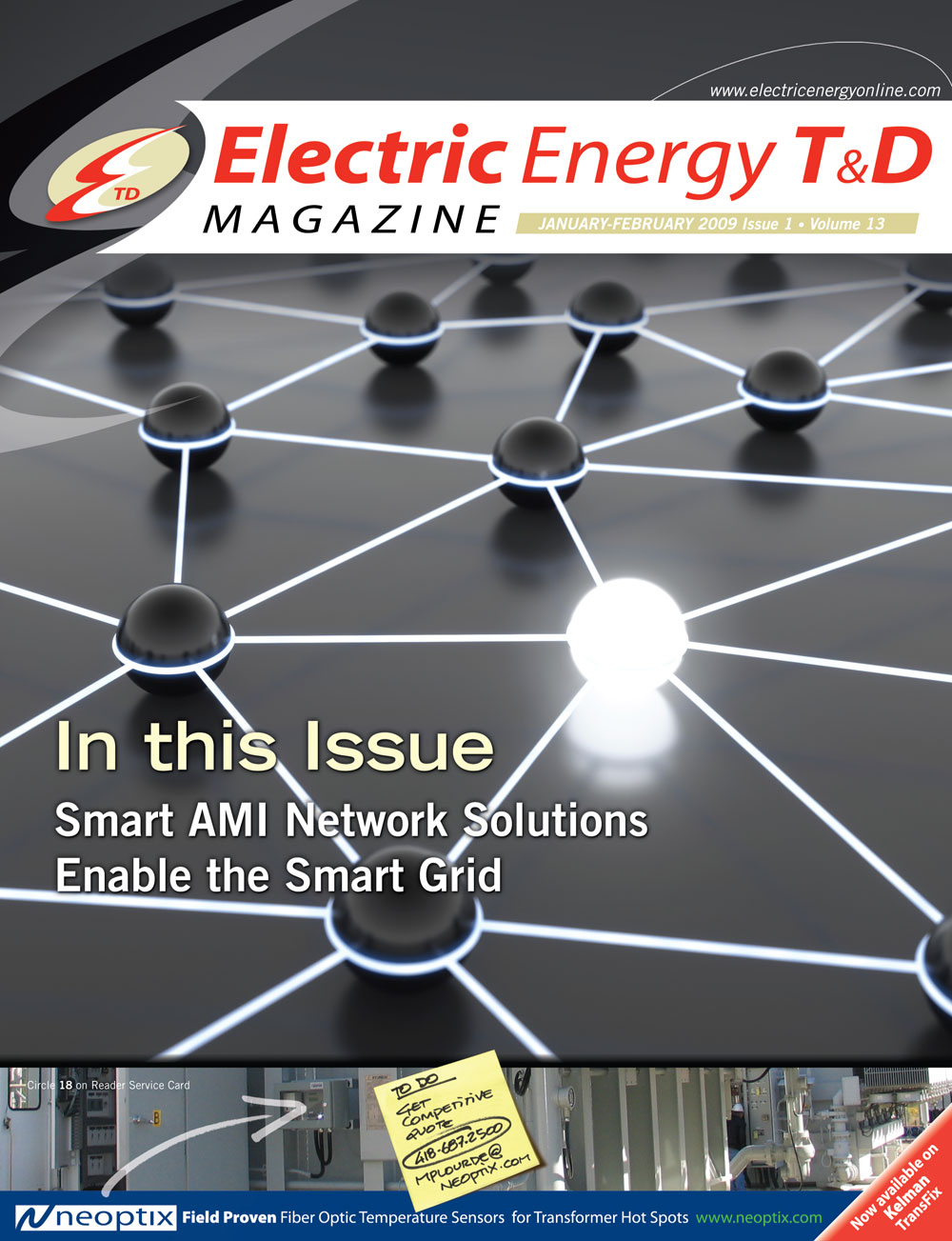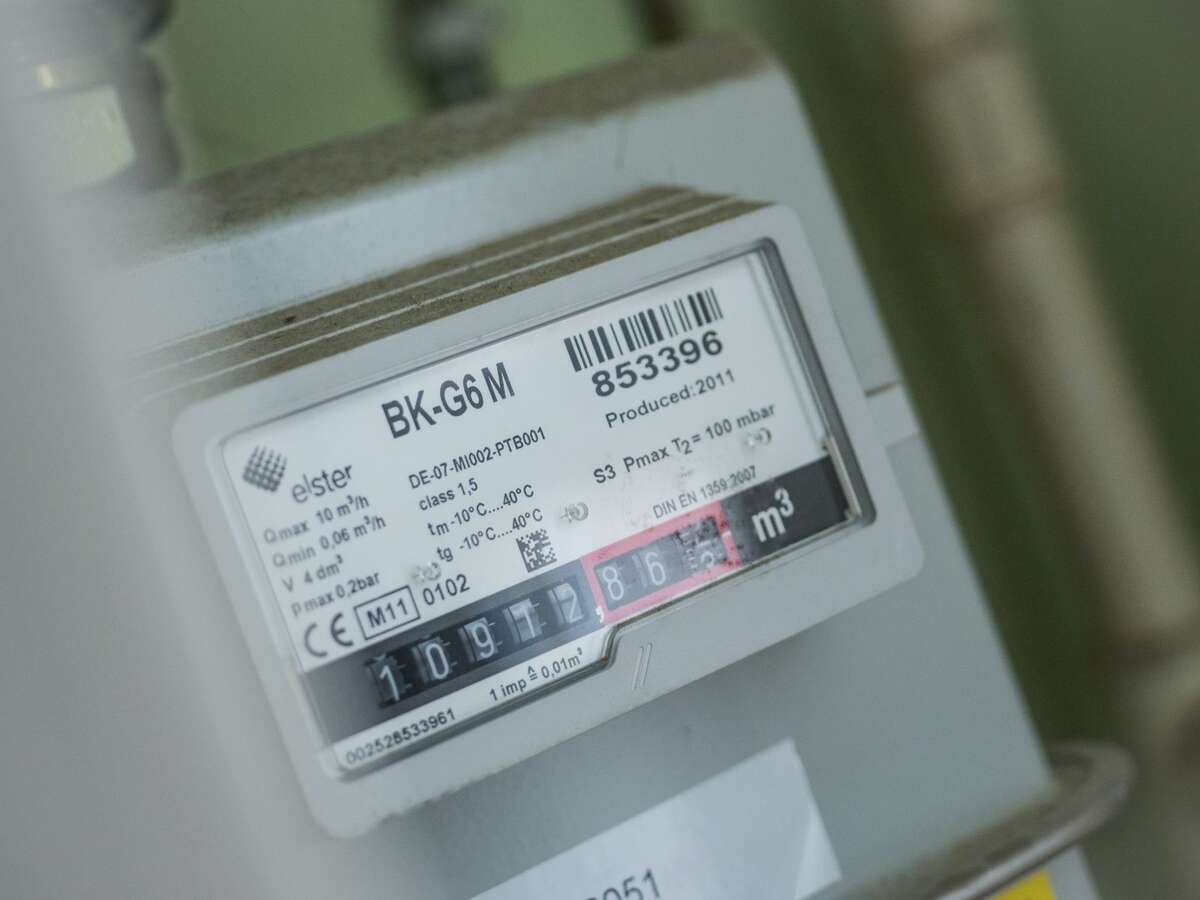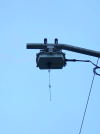It's a comms antenna. They can have various uses from controlling the traffic lights to sending video from cameras or even to be energy monitors/smart monitors. It looks like that one is perhaps for Electric Meter readings for the surrounding area.
On a continuous basis, utilities are challenged to meet the growth of peak energy demands, soaring costs, along with managing the operational risks of resource location combined with unprecedented env. . .

electricenergyonline.com
Multiple demand response and utility operations initiatives can be met with a Smart AMI Network’s capabilities to:
- Integrate water, gas and electric meters into one intelligent, bi-directional smart network
- Perform on-demand reads, deliver software downloads, and perform remote testing
- Remotely control and upgrade smart meter firmware to support network connectivity to/from and management of Home Area Networked appliances
- Broadcast TOU pricing to customers and load management signals to smart appliances through HAN interfaces in support of demand response strategies
- Store selective monthly usage details in smart meters and avoid erroneous trend estimates and inaccurate readings
- Control operations expense by minimizing field calls, truck rolls, and associated expenses
- Use the smart network for distribution automation and distributed generation and control
- Employ open standards protocols to interface with multi-vendor in-home networks
- Support response communications for smart thermostats and load control devices over the Smart AMI Network
- Enable remote connects and disconnects for service order work in transient areas
- Provide customers online access to hourly interval usage and the interactive ability to manage energy related expenses
- Assist in identifying sources of non-technical revenue losses
Empowering the energy sector with advanced technology. Implementing Advanced Metering Infrastructure (AMI) offers improved efficiency, enhanced customer service, and increased energy savings. Let's embrace a brighter and more sustainable energy future.

energycentral.com
Building Blocks of AMI
The Advanced Metering Infrastructure (AMI) is a comprehensive system of hardware and software components that work together to measure and transfer information on electricity consumption.
Smart electricity meters, also known as advanced metering infrastructure (AMI), are a type of digital meter that measures the electricity usage in a home or business in real-time. These meters communicate with the power utility through a wired or wireless network and provide a much more accurate and efficient way to manage energy usage compared to traditional analog meters.
Smart meters offer several benefits to both consumers and power companies. For consumers, smart meters provide real-time information about their energy usage, allowing them to make informed decisions about their energy consumption and save money on their electricity bills. Additionally, smart meters eliminate the need for manual meter readings, which can be inaccurate and time-consuming.
Power companies also benefit from smart meters by having the ability to monitor energy usage and quickly respond to power outages and other issues. This results in improved reliability and quicker resolution times for power-related problems. Smart meters also provide power companies with valuable data that can be used to make informed decisions about energy production and distribution.
One of the key features of smart meters is the ability to remotely disconnect and reconnect service, which eliminates the need for power companies to send technicians to physically disconnect or reconnect service at a customer’s home. This not only saves time and resources but also improves safety by reducing the number of technicians required to work in potentially hazardous conditions.
Another key feature of smart meters is the ability to support dynamic pricing, which allows power companies to charge customers different rates based on the time of day and the electricity demand. This type of pricing can help reduce peak demand and encourage customers to shift their energy usage to times when electricity is less expensive.
Communication Network
Communication networks play a crucial role in the functioning of smart meters, providing data transmission capabilities that allow for real-time energy monitoring, improved customer service, automated billing, improved grid management, and increased transparency.
Types of Communication Networks:
- Wired Communication Networks: This type of network uses a physical connection to transmit data between the meter and the energy provider. This can be done through power line communication (PLC), Ethernet, or a similar type of network. The main advantage of wired networks is their reliability, as the data is transmitted directly from the meter to the provider.
- Wireless Communication Networks: Wireless networks transmit data between the meter and the energy provider using radio waves. The most common type of wireless communication network used for smart meters is Zigbee, which operates in the 2.4 GHz frequency band. Other types of wireless networks, such as Wi-Fi or cellular networks, may also be used.
- Hybrid Communication Networks: Hybrid networks combine elements of both wired and wireless communication networks to provide a more comprehensive solution. This can be achieved by using a combination of PLC and Zigbee, for example. The advantage of hybrid networks is that they provide the reliability of wired networks with the convenience and flexibility of wireless networks.




